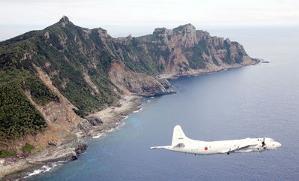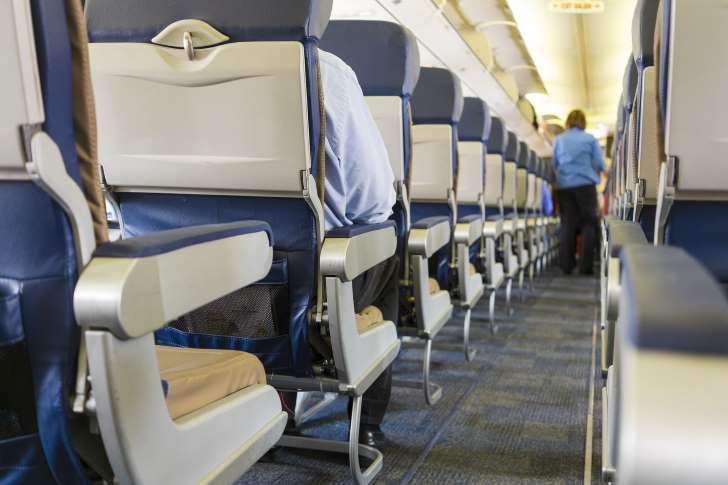March 8, 2015
One year after a Malaysia Airlines Boeing 777 carrying 239 people on flight MH370 from Kuala Lumpur to Beijing seemingly vanished into thin air, investigators are no closer to solving aviation’s biggest mystery.

MH370: One year anniversary
March 8, 2015
One year after a Malaysia Airlines Boeing 777 carrying 239 people on flight MH370 from Kuala Lumpur to Beijing seemingly vanished into thin air, investigators are no closer to solving aviation’s biggest mystery.

MH370: One year anniversary
And plenty of experts say it’s impossible to develop any kind of theory, because there’s literally no evidence to consider. “There is no way to know anything,” said Saj Ahmed, an aviation analyst. “Until we find the wreckage and find out what categorically happened, there’s no point in commenting.”
That, of course, hasn’t prevented a host of others, from amateur sleuths to seasoned experts, from speculating about the airliner’s fate. Theories have spanned from the sober and plausible to the outlandish and downright laughable (alien abduction, anyone?). We’ve left the craziest ones out, but here are five theories worth considering.

Family members and relatives of the ill-fated flight's Chinese passengers write prayers on balloons during a remembrance event in a mall outside Kuala Lumpur, Malaysia.
The Rogue Pilot
Theory: Someone in the cockpit – most likely the captain or first officer — took control of the aircraft, veered it off course on purpose, and caused it to run out of fuel and crash into the ocean. Nik Huzlan, a Malaysia Airlines captain who knew MH370 pilot Zaharie Ahmad Shah for decades, said he couldn’t imagine Shah doing such a thing. But, he told the New York Times, “Your best friend can harbor the darkest secrets.”
Why it’s possible: Many investigators give credence to this theory as the most likely scenario. It would explain why the plane totally changed course, initially following a series of precise waypoints that took it across Malaysia and over the Andaman Sea before disappearing from radar.
Its biggest flaws: There’s no evidence to indicate that either pilot in the cockpit would have had reason to do it.
Death By Hypoxia
Theory: Depressurization of the cabin led to hypoxia, a condition in which the body does not get enough oxygen. The lack of oxygen strips people of their judgment — yet “infuses them with a sense of well-being,” says Christine Negroni, aviation safety expert and author of the forthcoming “The Crash Detectives.” That could cause the flight crew to make all sorts of irrational decisions that would have taken the plane off course.
Why it’s possible: Previous cases of plane crashes caused by hypoxia in which the pilots died because of a lack of oxygen seem consistent with what is known about MH370. The Australian Transportation Safety Board also released a report indicating that several factors in the loss of MH370 share attributes with other crashes due to hypoxia, such as the cutting of radio communications and a maintenance of cruise altitude.
Its biggest flaws: If hypoxia did incapacitate the crew, who turned the plane around moments after the last, routine communication with air traffic control indicated that everything was normal.
A Cockpit Fire
Theory: Pilot Chris Goodfellow put this theory forward in Wired.com, suggesting that a major onboard event caused the pilot to turn toward the closest airport that could safely accommodate a large jet in an emergency. In this case, it would have been Pulau Langkawi, a 12,500-foot (3,800 m) airstrip in Malaysia that could be approached by flying straight over water and low terrain from the plane's last position along its planned flight path. Kuala Lumpur wouldn’t have made sense, says Goodfellow, because it would have required the plane to cross 8,000-foot (2,500 m) high mountain ridges, a less than ideal proposition in a fire emergency. A fire onboard the plane probably caused the crew to pass out from smoke inhalation, and the plane continued on autopilot until it ran out of fuel, eventually crashing in the ocean.

Why it’s possible: Goodfellow says the loss of transponder communications with the plane is consistent with something like an electrical fire.
Its biggest flaws: Again, there’s not much evidence to support the theory. A fire would also have to have been bad enough to disable the crew and communications equipment, but then to have stopped before consuming the aircraft, which flew on for hours.
Hijacked To Kazakhstan
Theory: Pilot and science journalist Jeff Wise spun a complicated theory in New York magazine that suggests that hijackers — possibly on orders from Vladimir Putin — broke into the jet’s electronics and equipment bay, tampered with the data there to throw off satellite pings, and flew the plane north to Kazakhstan, where there is an airstrip leased by Russia, which is long enough to accommodate a 777, as well as hangars large enough to hide it.
Why it’s possible: While there’s no physical evidence the plane went south, investigators concluded it flew that way because “burst frequency offset” data, which measures changes in the wavelength of a signal between the aircraft and a satellite, seemed to indicate it. But if the data was tampered with, the plane could have gone north instead. "Once I threw out the troublesome BFO data, all the inexplicable coincidences and mismatched data went away," Wise wrote. "The answer became wonderfully simple. The plane must have gone north."
Its biggest flaws: Putin, really?
Accidentally Shot Down
Theory: British author Nigel Cawthorne made this the basis of his book, the first published on MH370, entitled “Flight MH370: The Mystery.” Cawthorne argues that the plane could have been accidentally shot down during joint U.S.-Thai military exercises taking place in the South China Sea.
Why it’s possible: There are many precedents for this; military forces have shot down civilian aircraft before. The Soviet Union shot down Korean Air Flight 007 in 1983 thinking it was a spy plane; the U.S. Navy shot down an Iranian civilian jet in 1988 mistaking it for an attacking warplane; and during an exercise in 2001, a Ukrainian missile shot down a Russian jet killing 78 people. Not to mention MH17, another Malaysia Airlines 777, that was shot down over Ukraine only four months after MH370 disappeared.
Its biggest flaws: This would have required quite the cover-up from U.S. and Thai military officials. The plane is also known to have flown on for hours after leaving the area where the exercise was being held.
Courtesy: International Business Times
















































































































